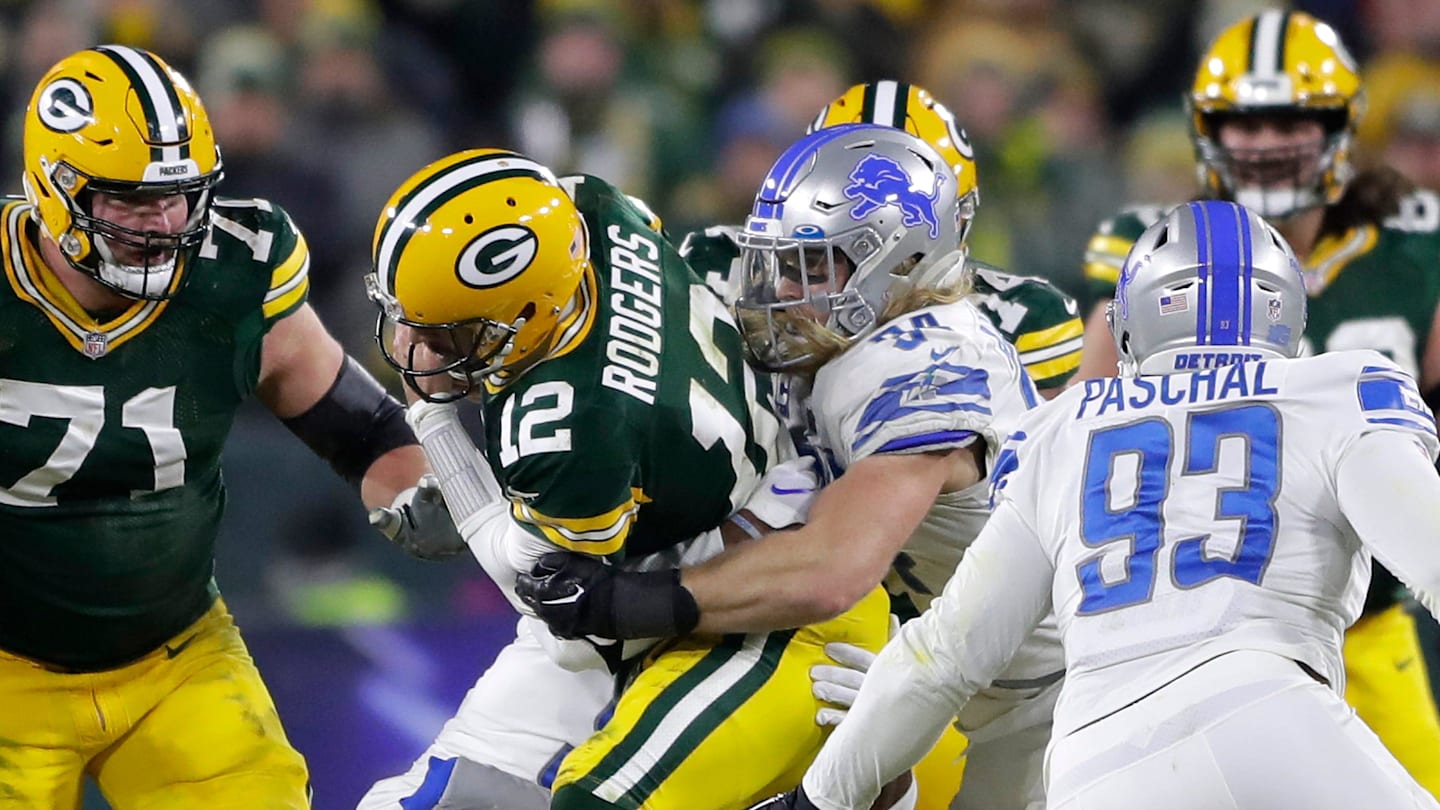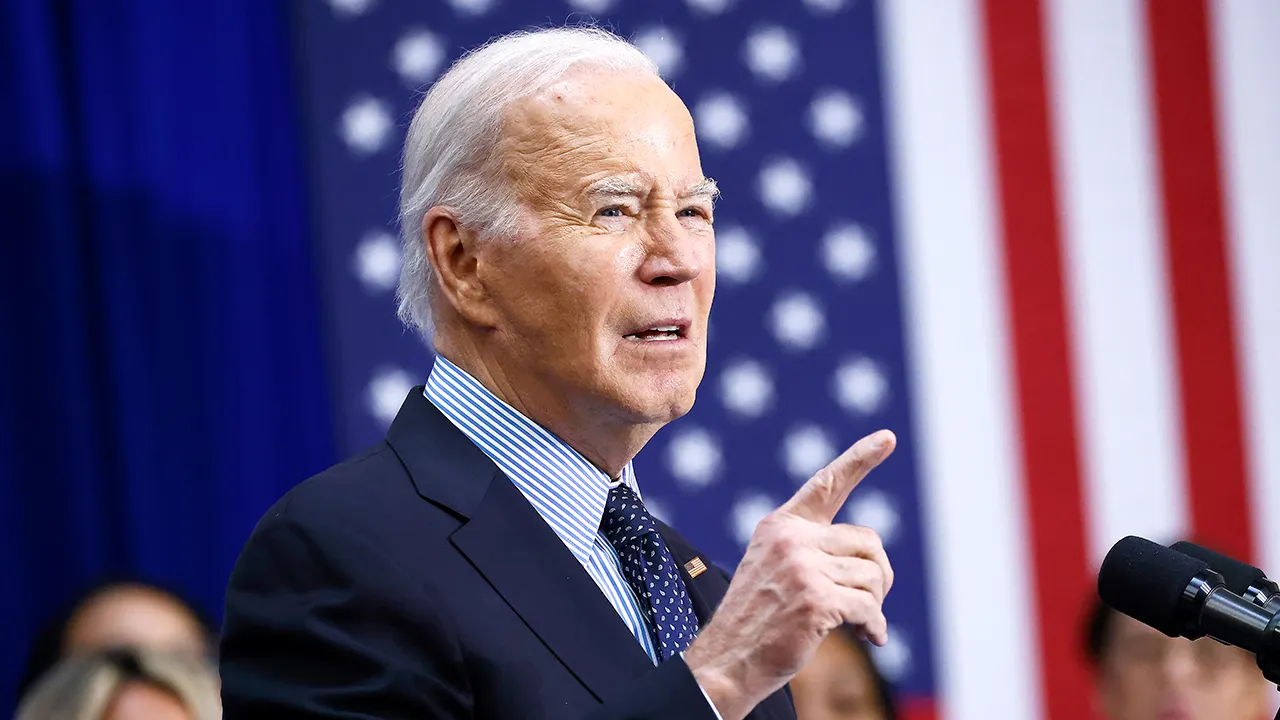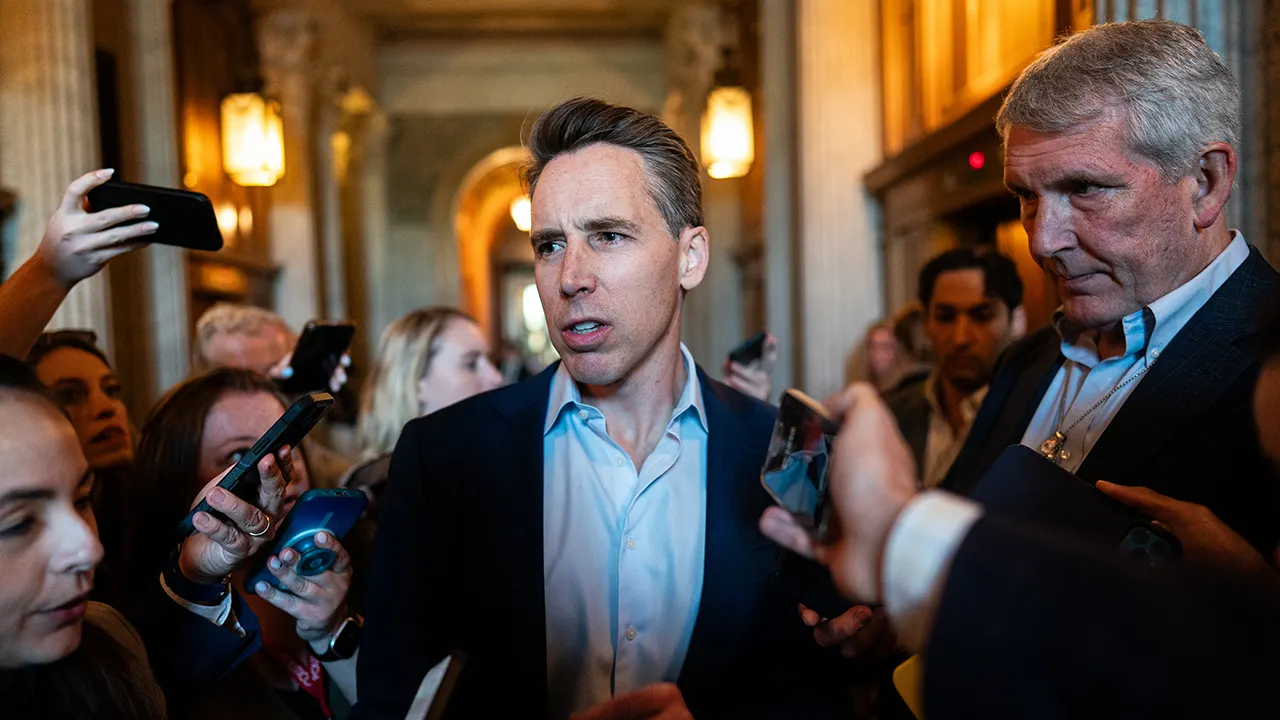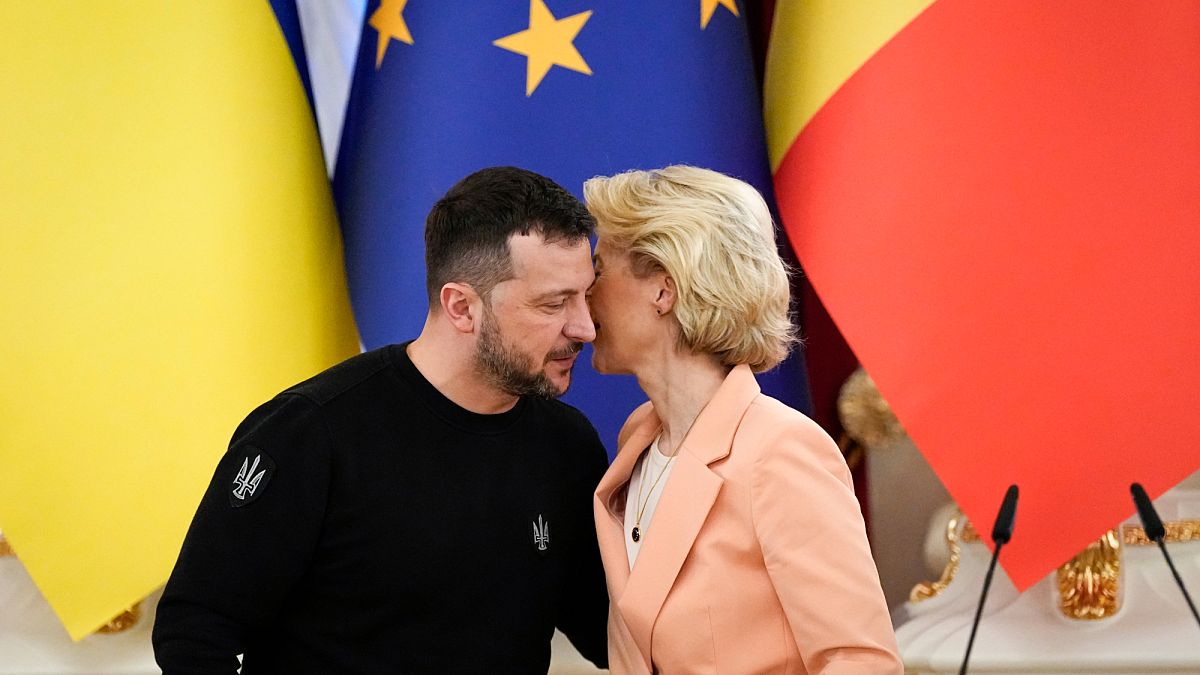New York
The 1963 March on Washington Changed America. Its Roots Were in Harlem.

Sixty years ago, in the summer of 1963, a four-story townhouse on West 130th Street in Harlem became the headquarters for what was then the largest civil rights event in American history, the March on Washington for Jobs and Freedom. For one summer the house, a former home for “delinquent colored girls,” was a hive of activity — so frenetic that the receptionist twice hung up on the Rev. Dr. Martin Luther King Jr. by mistake.
The march, which took place on Wednesday, Aug. 28, is now best remembered for Dr. King’s “I Have a Dream” speech, and for the crowd of 250,000 filling the National Mall. But it would not have been possible without the organizing at 170 West 130th Street, led by Bayard Rustin, a brilliant tactician whose homosexuality and former communist ties made him a target both inside and outside the movement.
Under the aegis of the march’s patriarch, the labor leader A. Philip Randolph, Mr. Rustin brought together the heads of the five big civil rights organizations — the Southern Christian Leadership Conference, N.A.A.C.P., National Urban League, Congress of Racial Equality and Student Nonviolent Coordinating Committee. Together with Mr. Randolph, they became known as the Big Six.
It was a pivotal moment in the civil rights movement, following Dr. King’s tumultuous campaign to force the desegregation of Birmingham and President John F. Kennedy’s sending the National Guard to enable Black students to attend the University of Alabama; Medgar Evers, a field secretary for the N.A.A.C.P., was assassinated in June in Mississippi. As Courtland Cox, one of the march organizers, recalled, “People were sick and tired of being sick and tired, and they wanted to make a statement to the nation.”
From a bare-bones office, Mr. Rustin managed the sometimes-fractious leaders, along with labor and religious groups and a crew of young volunteers and paid staff, to create an event that still resonates 60 years later.
Below are the memories of 10 people, now aged 75 to 92, who helped plan and organize the march. Their remarks have been edited for clarity and conciseness.
NORMAN HILL, national program director, Congress of Racial Equality: The march was organized in about six weeks, which was sort of amazing, to generate that many people and have an overall impact.
ELEANOR HOLMES NORTON, now a U.S. congresswoman from Washington, D.C.: There had never been a truly big march in Washington. There was a 1957 march [the Prayer Pilgrimage for Freedom], but that had maybe 25,000 people. That was seen as an indication that maybe we could not attract many people.
RACHELLE HOROWITZ, transportation director and aide to Bayard Rustin: Both Bayard and Mr. Randolph knew that progress had to be made in Washington. You could fight all these local fights, and they were important, but unless we got legislation and the support of the federal government, there was not going to be anything done, really.
VELMA HILL, East Coast field secretary, Congress of Racial Equality: I don’t know whether I should talk about this, but there was not harmony among the Big Six. The N.A.A.C.P. was looked upon as only going through the courts. And the Urban League was looked upon by SNCC and CORE as being too beholden to business. And King was referred to as “De Lord,” not in a nice way.
DR. JOYCE LADNER, field organizer, Student Nonviolent Coordinating Committee: That started in SNCC. It might have been Stokely [Carmichael] that started it, and it spread.
VELMA HILL: I think that the march would not have happened unless Randolph had called it, because A. Philip Randolph was the most respected leader of the 20th century. Unfortunately, enough is not discussed about him. It’s now King’s march. We loved King. But he was only one-sixth of the march policy committee.
NORMAN HILL: The first day was to be sit-ins in congressional offices. The second day there was to be a massive march on the nation’s capital.
COURTLAND COX, program secretary, SNCC: Roy Wilkins [then executive secretary of the N.A.A.C.P.] didn’t want Bayard to organize the march. And not only Roy Wilkins. But the person who could overcome that, and who people could not go up against, was A. Philip Randolph. And Bayard was his deputy. There’s nothing that Roy Wilkins could have said that would’ve made a difference, because A. Philip Randolph was there.
LYNN KILGORE HENDY, volunteer, now treasurer of Save Harlem Now!: My father [Thomas Kilgore Jr.] was pastor of Friendship Baptist Church. The church owned the building on 130th Street. My father was very good friends with Martin Luther King, since Dr. King was a child.
When they needed someplace to do the planning and have a central office, they thought that Harlem would be a good place. It would probably be dangerous to put it anywhere in the South. So my father offered the building.
DR. JOYCE LADNER: A call went out from Bayard or Mr. Randolph to each civil rights organization to send two people to staff the march. That’s how Courtland Cox and I were appointed by SNCC. We were the worker bees.
SNCC wasn’t especially excited about a march.
COURTLAND COX: Most people in SNCC basically thought it was taking time away from the work they were doing in Mississippi, and it was only because I had a relationship with Bayard, and his convincing me that it was going to be an important march, that we were really much involved in the March on Washington.
CLARENCE B. JONES, lawyer and speechwriter for Dr. King: Following the success of the Birmingham campaign in April and May of 1963, on June 21, then-President Kennedy invited all of the major leaders to come to the White House to consider the next step. He and the attorney general wanted to discourage the leaders of the civil rights organizations from planning any march directly on Congress.
NORMAN HILL: Kennedy thought there was likely to be violence, and that would set back the cause of civil rights. He was geared to introduce civil rights legislation, and he felt that if there was a march with violence, it would jeopardize the passage of the legislation.
RACHELLE HOROWITZ: The Kennedy administration put a lot of pressure on people like Wilkins not to sponsor it. It became a soft pitch: We are really for your marching, but will there be enough toilets? And will there be enough water? Bayard called them the Latrine Letters. That only encouraged Bayard to be more organized and more precise. It had a negative effect.
NORMAN HILL: Randolph said to Kennedy, “If we don’t march, we’ll lose all credibility. No one will follow us.” Randolph and the other leaders, with Bayard being the chief organizer, went back to organizing the march.
CLARENCE B. JONES: Dr. King traditionally after some major event took his family on vacation. They’d normally go to the Bahamas or Jamaica. But he didn’t do it this time. The thought was that he clearly couldn’t be away. So my wife and I moved out of our brand-new house in Riverdale, in the Bronx, and he moved his family in, and for the next six weeks my home became the S.C.L.C. North.
His older son, Marty Jr., said to me that of all the times they can remember being with their dad, that’s the time they most remember, because they were all together.
JINI KILGORE COCKROFT, worker for the Southern Christian Leadership Conference: I was 15. My job was to type probably thousands of envelopes and stuff them and take them downtown to the central post office, so that we would notify people around the country of the march. I was also distributing leaflets on stoops in Harlem and taking them into stores.
The Nation of Islam members and the Fruit of Islam were not in favor of integration. They favored separatism and self-help. They kind of tailed me when I was putting leaflets on stoops. They’d take them off as soon as I put them on. Their strategy was different from the S.C.L.C.’s. They didn’t think the march would do any good.
PATRICIA WORTHY, receptionist at march headquarters, now a law professor at Howard University: We used to get threats all the time. And of course, since I answered the phone, I was the one who got them. People threatening to bomb the place, or telling us there was a bomb in the place, or that they were going to kill us. And I would get rattled, and I would walk into Bayard’s office and he’d say three or four things, and I would get up and go back to work. He had a sense of assurance and command. He filled up a space. His eyes sparkled and he had that gray hair, and it was all fuzzy. Just bigger than life.
COURTLAND COX: There was a lot of energy in Harlem. You would walk on 125th Street and the clothing stores’ doors would be open, and you would hear the Isley Brothers’ “Twist and Shout” blasting from the various stores trying to attract people. And if you went to 125th and 7th Avenue or Lenox, people were on ladders talking about their political views or religious beliefs about what was happening in America.
RACHELLE HOROWITZ: I had an apartment in the ILG [International Ladies’ Garment Workers’ Union] co-ops in Chelsea. Joyce Ladner and her sister Dorie — her sister Dorie was working as a volunteer for the SNCC office — and Eleanor Holmes Norton stayed at my apartment. I had two futon-type couches in the living room where the Ladners slept, and Eleanor slept in my bedroom.
DR. JOYCE LADNER: Dorie was very close to Bobby Dylan. He used to come to our apartment. He hung out at the SNCC office during the day, and he would come home with Dorie. We worked long hours, sometimes till 11 o’clock at night, and we were so tired when we got home. All I wanted was for Bobby Dylan to get off the sofa that I had to sleep on and go home, go anywhere.
He was serenading. He would write songs on the typewriter at the SNCC office during the day. He gave Dorie one. He wrote three songs that were inspired by her. One — “Outlaw Blues” — the last stanza is very much dedicated to Dorie. He’d be singing, and I’m just sitting there exhausted, wishing this boy would go home. Eventually he’d get up and leave, and Dorie and I would open up the sofa to sleep on.
CLARENCE B. JONES: There was a meeting as to the order of the speakers, and some people didn’t want Martin King to be the last speaker. Finally, I had to say, “Excuse me, have you heard Dr. King speak? Do you really want to follow him? Do any of you want to follow him?” I had to convince these ego-driven preachers and other people to let Dr. King be the last speaker. It was all out of ego.
NORMAN HILL: Early in the organizing of the march, Strom Thurmond [the segregationist Republican senator from South Carolina] spoke on the floor of the United States Senate, attacking Bayard as a communist, pervert and draft dodger. And Randolph called a press conference in response and indicated that Bayard would continue as the chief organizer and conferred unequivocal confidence in Bayard.
ELEANOR HOLMES NORTON: Our jobs were really quite mundane. One of my jobs was to link people to buses so that they could get to Washington. That’s the kind of legwork that was needed.
PATRICIA WORTHY: It was a busy place, whoa! High energy, everybody committed, everybody working late hours. I was the skinniest child when I started, and I was skinnier when I left. Wasn’t much eating.
VELMA HILL: Bayard would sing songs and we would work around the clock. He was an Elizabethan tenor.
LYNN KILGORE HENDY: He had that wonderful British accent. I have no idea where that came from, but he did have one. And I just loved to listen to him talk.
NORMAN HILL: Randolph had a deep, baritone voice, with a Shakespearean tone. He projected great dignity and a clear articulation.
VELMA HILL: And he was a gentleman. I would get in the car with him and he would help me get into the car. And a lot of times he would say at a meeting on Sunday afternoon or evening, “I have to go home to read Shakespeare to my wife.” And I remember telling Norm, “Norm, if you decide to read Shakespeare to me, I will never leave you.”
COURTLAND COX: A big thing was making sure there were enough monitors and marshals and so forth to make sure paper was picked up, people were marching in line, everybody knew what the disciplines were.
RACHELLE HOROWITZ: There was an organization of Black policemen in New York called the Guardians. Bayard got them to volunteer to be the internal monitors, and he actually trained them in nonviolent crowd control, which meant encircling a crowd, not doing the policeman thing. Every day in the courtyard of the building, there would be groups of 20 policemen out there, and Bayard would be doing nonviolence training with them.
CLARENCE B. JONES: The pied piper of the civil rights movement at that time was Harry Belafonte. He had an understanding that no matter how important an event you put on, America is a celebrity-oriented country. And he convinced Bayard Rustin and A. Philip Randolph and Dr. King. He said, you want to make sure you get great publicity coverage, we’ve got to bring as many stars there as possible. So he was put in charge of the celebrity delegation.
RACHELLE HOROWITZ: Harry Belafonte gets a lot of credit for bringing the movie stars, and he deserves it. But Ossie Davis came to the office all the time, came to staff meetings, was on the phone negotiating. He was just like the most wonderful staff person.
NORMAN HILL: None of the major speakers at the march were women.
VELMA HILL: It was male chauvinism.
RACHELLE HOROWITZ: Bayard was upset by it, but he didn’t know how to get around it. He proposed a compromise, which was that Daisy Bates, who had led the effort to integrate the schools in Little Rock, would speak and honor three or four other women who were active in the movement. There were women who were very disaffected — Pauli Murray, Ella Baker.
DR. JOYCE LADNER: There was not a spotlight in the country focused on parity for women. And race was such a dominant, overbearing issue in my life that being a woman didn’t even factor into it. I lived during two lynchings in Mississippi. The last one in 1959 occurred 15 miles from where I lived. So there was little room for me to delineate women out of that larger group of oppression.
RACHELLE HOROWITZ: In retrospect, obviously they should have had Dorothy Height [president of the National Council of Negro Women] or someone speak.
DR. JOYCE LADNER: Some days before the march, John Lewis [then chairman of the Student Nonviolent Coordinating Committee] showed his speech to us. I remember looking at it. Bayard and Rachelle looked at it. It was a communal statement; it was not John’s alone. So when the word got out that the White House and the Archbishop of Washington [Patrick Cardinal O’Boyle] wanted him to change it, we said, Oh, hell no.
NORMAN HILL: The archbishop threatened to pull out of the march unless the speech was modified. A. Philip Randolph appealed to John, saying, “Please don’t ruin this event and this day for an old man like myself.” John said later, how could he refuse Randolph?
VELMA HILL: We wanted to have the biggest showing, the most integrated showing. We wanted to pass the Voting Rights bill. I did not think the march would be that big.
CLARENCE B. JONES: I thought, maybe we could get 100,000 people. Possibly a large crowd, but I didn’t think 250,000. Now as I look back, if we had had cellphones and laptops, there would have been five million people there.
PATRICIA WORTHY: We came down on a bus, and we sang the whole way down. “We Shall Overcome” — we must’ve sang that 4,000 times. We got there at maybe 5 in the morning, and I said to Mr. Rustin, “I think I’ve talked to everyone as far as the eye can see.”
The buses were starting to come, and he came over and he said, “Wow, they’re really going to show up.” That was the first time I realized that he really wasn’t sure that the people were coming, either. Prior to that, he’d given us the impression that he was sure this was going to be a success.
I went around Mr. Lincoln and I sat down and fell asleep, and I missed the entire march. I missed Dr. King’s speech. I missed everything.
NORMAN HILL: We thought that the march would bring national attention to the demands of the civil rights movement. The march policy committee developed 10 demands. A number of them were met by the civil rights legislation of ’64 and ’65. The economic demands are still relevant today.
DR. JOYCE LADNER: It was the first time that the movement became national. Before the march, everything was confined to the South or to people picketing stores in support of the South. The march made racism America’s problem, and not just what’s happening down South among those rednecks. It became recognized as a national problem.
VELMA HILL: The Big Six never worked together that way again. Sometimes I really long for the days of the march. In a funny way I wish I were 20 again. But you know, there are some young people out here, and I think Norman and I can help them. I think we can teach them. I think the coalition can come together again.

New York
N.Y.C.’s Mayoral Candidates Spent Millions on TV Ads. What Are They Saying?

Estimated spending on
broadcast ads that have aired
$1.1 million
$4.3 million
The Democrats running for mayor in New York City and a super PAC supporting Andrew M. Cuomo are spending millions to reach potential voters, with much of the spending going toward commercials on broadcast television. A New York Times analysis of the broadcast ads that have aired so far, using data from AdImpact, explored the major themes highlighted by the candidates: crime and safety, President Trump, affordable housing and corruption.
Among the ads aired,
seven mention crime and safety
3 ads
Mr. Cuomo, the former governor, has been framing himself as a law-and-order candidate who will crack down on crime and improve public safety. Ads run by Fix the City, the super PAC backing Mr. Cuomo, have depicted New York as a city in chaos. One of its ads opens with images of police sirens, caution tape and subway riders fleeing a smoke-filled train.
“Crime is rampant,” says a voiceover in another pro-Cuomo ad, also paid for by Fix the City. That ad also references Mr. Cuomo’s “five-borough crime and affordability plan,” which would add “5,000 more cops” to the streets.
Other candidates took a subtler approach. Scott Stringer, a former city comptroller, said in his only broadcast ad to air so far that he would “put a cop on every train” and “hire more mental health workers.” An ad for Brad Lander, the current city comptroller, tied the idea of safety to Mr. Lander’s plan to “end street homelessness for the mentally ill.” An ad for Zohran Mamdani, the state assemblyman, simply said he would make New York a “safer city.”
Among the ads aired,
five mention President Trump
2 ads
Taking jabs at Mr. Trump and his administration could almost be considered a requirement for candidates running in a Democratic primary in a city where former Vice President Kamala Harris won about 70 percent of votes in the 2024 presidential election. Still, some of the ads that mention the president are more direct than others.
An ad for Mr. Stringer was among the most explicit: “We deserve a mayor who can get our city back on track and keep this schmuck out of our business,” Mr. Stringer says over a clip of Mr. Trump dancing at a rally, adding that he will “tell Trump where to stick it.”
Mr. Lander drives a large forklift around a junkyard in his broadcast ad and places cars into a crushing machine. One of the cars has the words “Trump & Musk” in large black letters across the side.
Other candidates made only passing swipes at the president. Some of the ads supporting Mr. Cuomo mentioned that he took on Mr. Trump as governor and will again as mayor, and an ad for Mr. Mamdani said he would stand up to Mr. Trump. Mr. Myrie’s broadcast ad did not mention Mr. Trump.
All ads mention affordable housing
3 ads
Every broadcast ad reviewed in the analysis mentioned housing at least once. In one ad, Mr. Mamdani likened Mr. Cuomo to the current mayor, Eric Adams, whose housing policies have been similar to the former governor’s, and whose popularity declined after he was indicted on fraud and corruption charges in 2024. The Trump administration later dropped the charges.
“Cuomo is running for Adams’s second term,” Mr. Mamdani said in the ad, adding that he will “take on bad landlords and greedy corporations.”
Mr. Adams and Mr. Cuomo are both moderates who have many of the same donors, including powerful real estate leaders, and both have supported housing policies that are in stark contrast to Mr. Mamdani’s. The mayor and former governor both oppose freezing increases for rent-stabilized apartments, for example, while one of Mr. Mamdani’s ads is devoted solely to his plan to freeze rent prices.
In ads for other candidates, housing is mentioned only briefly. An ad by Fix the City for Mr. Cuomo said he will “cut red tape for affordable housing and build 500,000 new units.” In Mr. Stringer’s ad, he said he will “turn vacant lots into affordable apartments.” Mr. Myrie’s ad says he has “the boldest plan to build affordable housing.”
Among the ads aired,
three mention corruption
0 ads
Several of the candidates mentioned corruption in their ads. In Mr. Lander’s ad, a second car is brought out to be crushed, this one symbolizing “corruption,” specifically as it relates to Mr. Cuomo.
“Andrew Cuomo spent $60 million of your money to defend himself in court. That’s corrupt,” a voiceover says as the car is brought to the crushing machine. “But Brad Lander fights corruption.”
In the ad in which Mr. Mamdani compares Mr. Cuomo to Mr. Adams, the candidate paints the former governor and mayor as the corrupt establishment, responsible for making the city unaffordable.
“Working people are being pushed out of the city they built, and it’s because corrupt politicians like Eric Adams and Andrew Cuomo have sold us out to billionaires and corporations, rigging the economy against us,” Mr. Mamdani says over a series of images that combine Mr. Cuomo’s face and quotes about the former governor from news articles.
Mr. Stringer defines corruption less precisely, mentioning that he “fought corruption” as comptroller. The three pro-Cuomo broadcast ads by Fix the City did not mention corruption, nor did the ad for Mr. Myrie.
Total spending on advertising,
including future broadcast spots
| Total spent | Broadcast share | |
|---|---|---|
|
Fix the City (pro-Cuomo super PAC) |
$8.1 million | 91% |
 Mamdani |
$3.0 million | 41% |
 Lander |
$2.3 million | 72% |
 Stringer |
$1.9 million | 83% |
 Myrie |
$1.7 million | 27% |
Spending on ads that have already aired on broadcast television, which this analysis focused on, is one slice of candidates’ overall ad spending. They have also purchased broadcast spots to air more ads in the future, as well as ads on other platforms like streaming television, satellite and internet. Broadcast was, however, a major focus for the candidates.
Fix the City, the pro-Cuomo super PAC, has spent the most on advertising by far, with 91 percent of its spending devoted to commercials on broadcast networks. (Mr. Cuomo’s campaign has not yet aired any of its own ads on broadcast television, according to AdImpact.)
By contrast, the campaign for Mr. Mamdani, which has become known for its savvy approach to social media, has spent just 41 percent of its advertising budget on broadcast, according to the AdImpact data. (Mr. Mamdani’s campaign has, however, spent more on broadcast than any other individual platform.)
One of the leading Democrats in the mayor’s race, Adrienne Adams, the speaker of the New York City Council, has not yet aired an ad on broadcast television. The candidate struggled to raise funds early in her campaign, but recently got an infusion of $2 million from the city’s fund-matching program, which the campaign said it would use for an aggressive ad blitz in the coming weeks before the June 24 primary.
New York
Are You Smarter Than a Billionaire?

Over the course of one week, some of the richest people in the world descended on New York’s auction houses to purchase over $1 billion of art. It might have played out a little differently than you would have expected.
Can you guess which of these works sold for more?
Note: Listed sale prices include auction fees.
Image credits: “Untitled,” via Phillips; “Baby Boom,” via Christie’s Images LTD; “Hazy Sun,” With permission of the Renate, Hans & Maria Hofmann Trust/Artists Rights Society (ARS), New York; via Christie’s Images LTD; “Petit Matin,” via Christie’s Images LTD; “Concetto spaziale, La fine di Dio,” Artists Rights Society (ARS), New York/SIAE, Rome; via Sotheby’s; “Baroque Egg with Bow (Orange/Magenta),” via Sotheby’s; “The Last Supper,” The Andy Warhol Foundation for the Visual Arts, Inc./Licensed by Artists Rights Society (ARS), New York; via Christie’s Images LTD; “Campbell’s Soup I,” The Andy Warhol Foundation for the Visual Arts, Inc./Licensed by Artists Rights Society (ARS), New York; via Christie’s Images LTD; “Miss January,” via Christie’s Images LTD; “Fingermalerei – Akt,” via Sotheby’s; “Grande tête mince (Grande tête de Diego),” Succession Alberto Giacometti/Artists Rights Society (ARS), NY; via Sotheby’s; “Tête au long cou,” Succession Alberto Giacometti/ARS, NY/Photos: ADAGP Images/Paris 2025; via Christie’s Images LTD; “Revelacion,” Remedios Varo, Artists Rights Society (ARS), New York / VEGAP, Madrid; via Christie’s Images LTD; “Le jardin nocturne,” Foundation Paul Delvaux, Sint-Idesbald – ARS/SABAM Belgium; via Christie’s Images LTD.
Produced by Daniel Simmons-Ritchie.
New York
Video: How a Mexican Navy Ship Crashed Into the Brooklyn Bridge

On Saturday, a Mexican Navy ship on a good will tour left a New York City pier bound for Iceland. Four minutes later, it crashed into the Brooklyn Bridge. [Spanish] “It’s falling!” [English] “No way!” Here’s what happened. The Cuauhtémoc had been docked on the Lower East Side of Manhattan for four days, open to visitors looking for a cultural experience. As the ship prepared to leave on Saturday night, a tugboat arrived to escort it out of its pier at 8:20 p.m. The ship’s bow, the front of the vessel, faced Manhattan, meaning it would need to back out of its berth into the East River. As the Cuauhtémoc pulled away from shore, the tugboat appeared to push the side of the ship, helping to pivot the bow south toward its intended route. The river was flowing northeast toward the Brooklyn Bridge and the wind was blowing in roughly the same direction, potentially pushing the ship toward a collision. Photos and videos suggest the tugboat was not tied to the ship, limiting its ability to pull the ship away from the bridge. The Cuauhtémoc began to drift north, back first, up the river. Dr. Salvatore Mercogliano, who’s an adjunct professor at the U.S. Merchant Marine Academy, told The Times that the ship appeared to be giving off a wake. This suggests its propellers may have been running in reverse, pushing it faster toward the bridge. The tugboat sped alongside the ship as it headed north, possibly trying to get in front of it and help the ship maneuver the other way. But it was unable to cut the ship off or reverse its course. All three masts crashed into the underside of the Brooklyn Bridge at approximately 8:24 p.m., four minutes after the ship had left the pier, causing the top sails to collapse. Crew members standing on the masts during the collision were thrown off entirely. Others remained hanging from their harnesses. A New York City patrol boat arrived about eight minutes after the collision, followed quickly by a fire department boat. Additional law enforcement and emergency medical services removed the wounded for treatment. According to the Mexican Navy, two of the 227 people aboard the ship were killed and 22 others were injured.
-
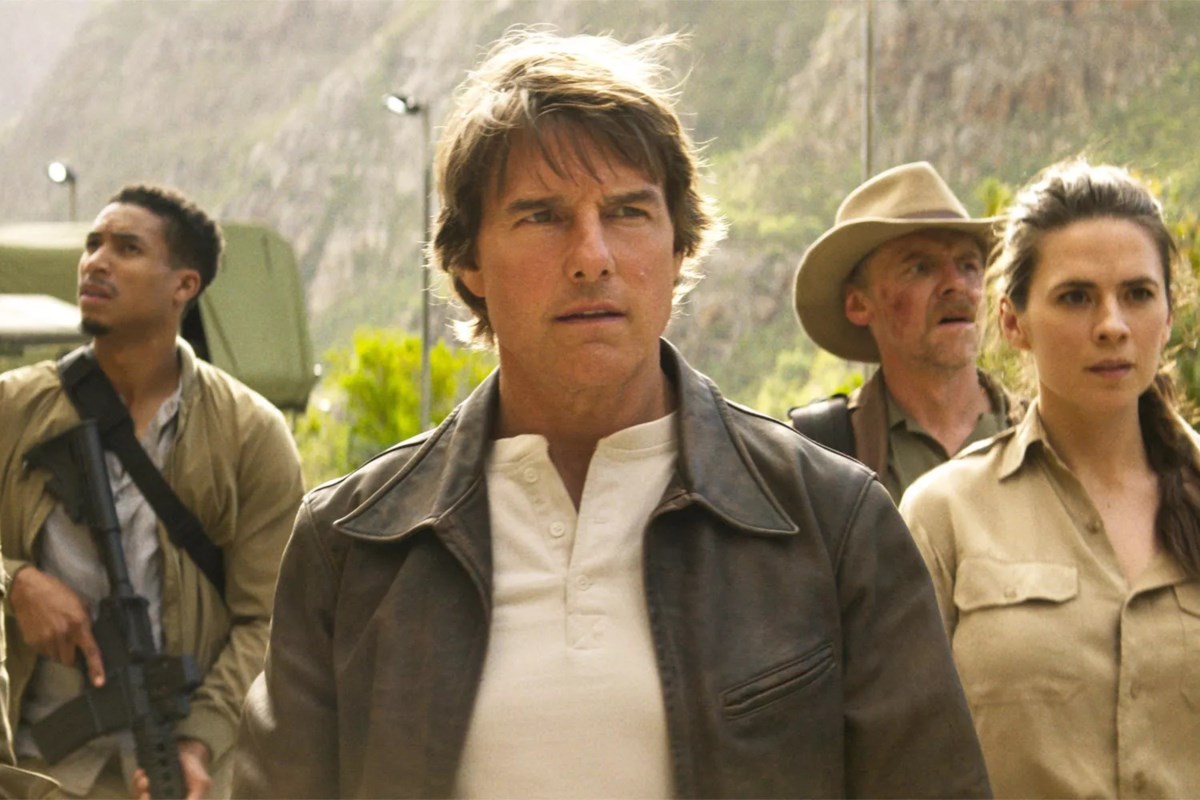
 Movie Reviews1 week ago
Movie Reviews1 week agoMOVIE REVIEW – Mission: Impossible 8 has Tom Cruise facing his final reckoning
-
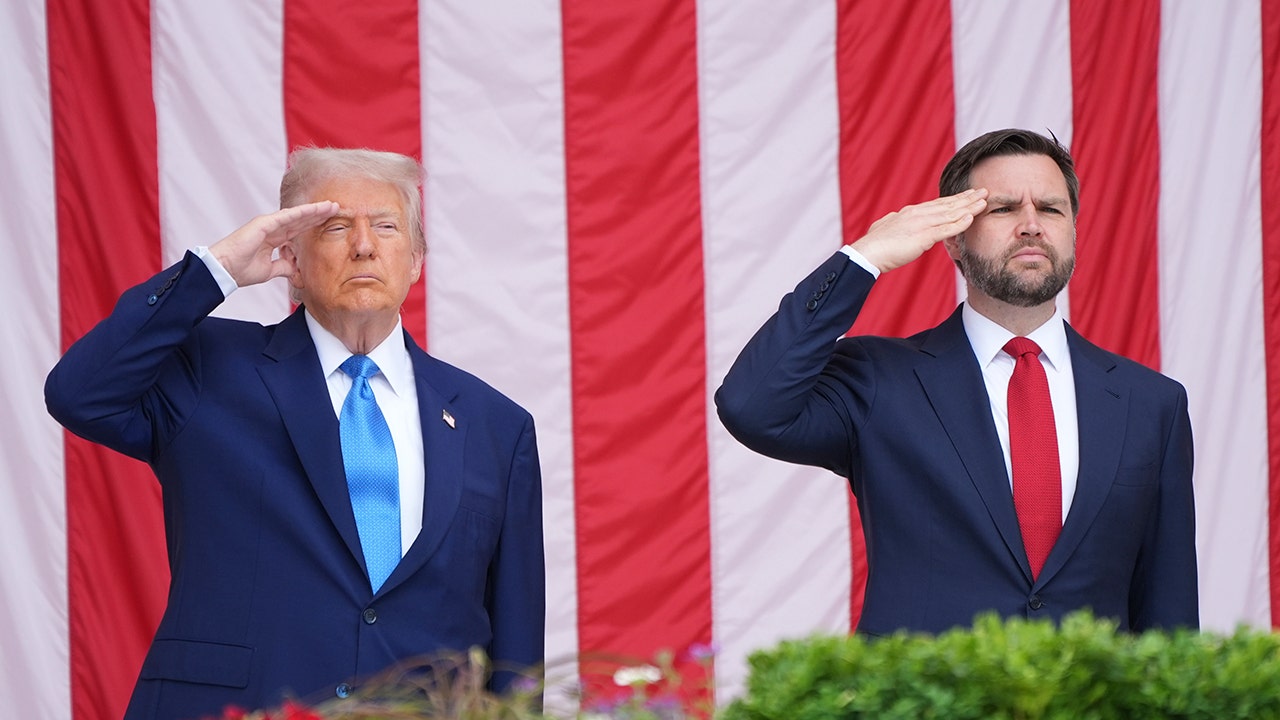
 Politics1 week ago
Politics1 week agoTrump honors fallen American heroes, praises God in Memorial Day address: 'Great, great warriors'
-
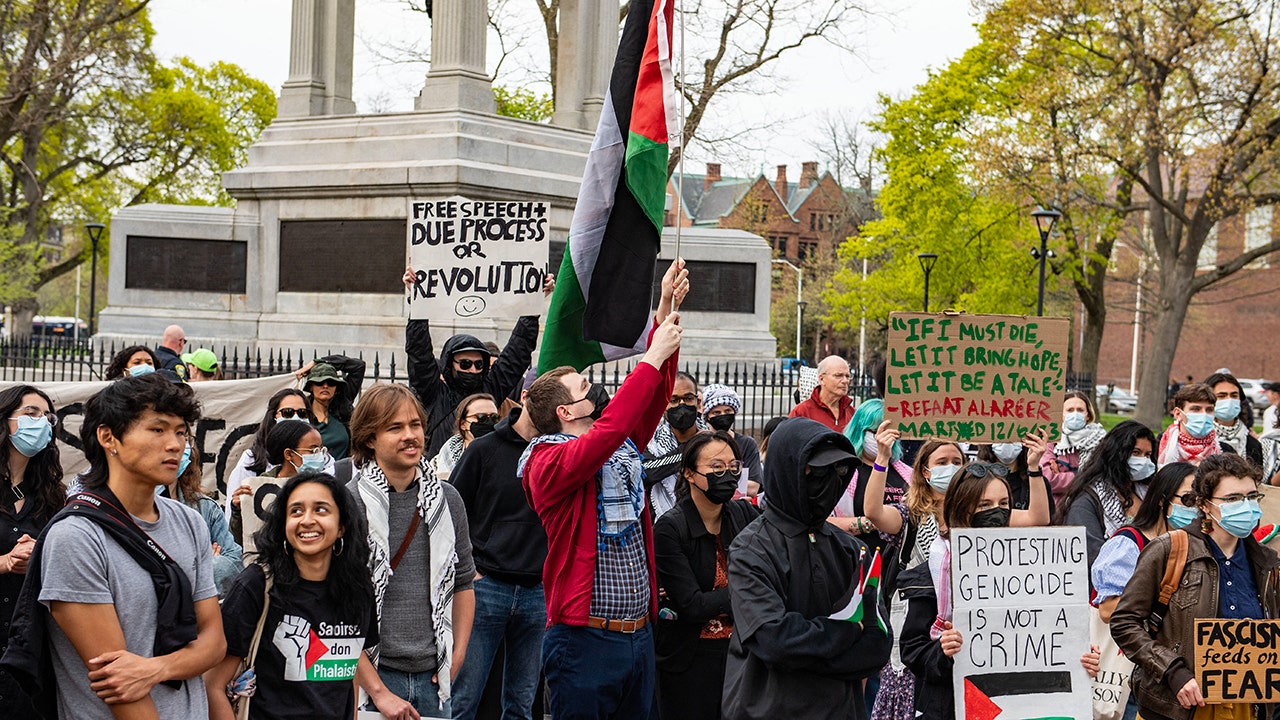
 Politics1 week ago
Politics1 week agoTrump admin asking federal agencies to cancel remaining Harvard contracts
-

 Culture1 week ago
Culture1 week agoCan You Match These Canadian Novels to Their Locations?
-

 Technology1 week ago
Technology1 week agoThe Browser Company explains why it stopped developing Arc
-

 News1 week ago
News1 week agoHarvard's president speaks out against Trump. And, an analysis of DEI job losses
-

 News1 week ago
News1 week agoRead the Trump Administration Letter About Harvard Contracts
-

 News6 days ago
News6 days agoVideo: Faizan Zaki Wins Spelling Bee
